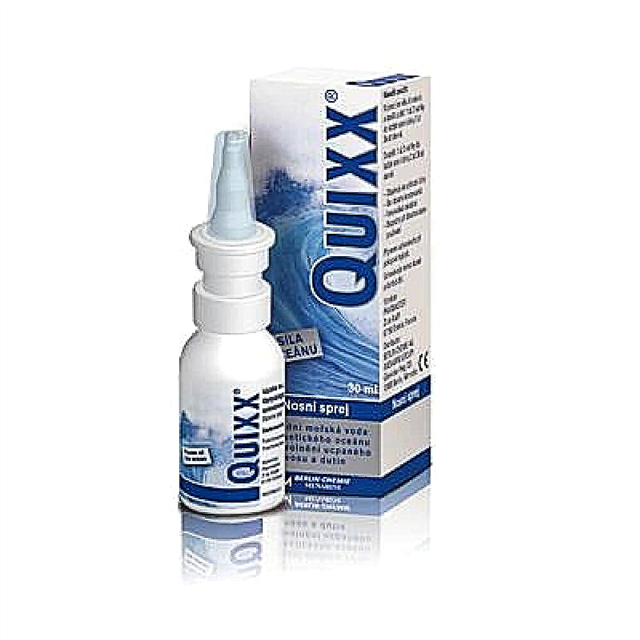
Fruit puree in the diet of an infant not only gives him pleasure from the new taste, but also enriches the body with vitamins. Among other things, the product contains dietary fiber necessary for soft and delicate digestion and elimination of typical infant intestinal problems.
In this article, we will tell you how to give fruit to the smallest, how to buy high-quality puree, how to make it yourself.
What kind of puree is right for children?
Fruit puree is usually introduced second in a row after the toddler gets acquainted with a similar vegetable dish. They are more easily absorbed by the child's body. therefore for the first fruit treat, it is better to choose a combined type of product, in which the fruit component is combined with vegetable, for example, pumpkin-fruit puree.
For children of the first year of life, apple puree, pear puree are great, berry versions of a delicious dish are usually offered later.
A large selection of such a product is offered on a wide sale today, but not all of its types are suitable for feeding babies. Therefore nWhen choosing, it is important to focus on proven manufacturers and the age group, indicated on the jar of puree. It is not worth buying a product in soft packaging for a baby., it is usually intended for older children.


Make sure that the puree complies with GOST, this information should also be indicated on the package. In addition, consult with your pediatrician in advance to exclude temporary indications for the introduction of complementary foods.
When buying a complementary food product, pay attention to several points.
- Shelf life... It must comply with the standards, after opening the jar, it can be stored in the refrigerator for no more than a day. Ideally, it is best to open a new can for each meal. When the lid is opened, an unexpired and suitable product emits a dull cotton. If there is no such "signal", it is dangerous to feed the baby with purchased puree.
- Composition... High-quality baby food should not contain dyes, preservatives, food additives and flavorings, sugar. For a suitable puree, a natural composition is considered in which only fruit and water are present, and for a puree with added cream, fruit, water and cream are considered natural.
It is best to try fruit puree for a child before offering it to a child. If something seems suspicious (color, consistency, smell), it is better not to give this product to the crumbs... But pediatricians also do not recommend mashed potatoes with the addition of soy, although many parents have been very fond of this product recently.
It is worth buying a few jars of ready-made fruit puree and keeping it in the refrigerator just in case. This is necessary, since not all children love homemade puree, even if the mother has the time and opportunity to cook it. Therefore, a baby, even such a small one, must have a choice.


Can I add to porridge?
This question is faced by parents whose children do not want to eat puree from fruits separately (which happens infrequently) or do not want to eat cereals separately (this happens much more often). In this situation, experienced mothers say, you can mix a fruit delicacy and such a familiar ordinary porridge, then offer such a dish to your child. It is worth understanding this problem in more detail.
If we start from the compatibility of products, then complete mutual understanding reigns between cereal or cereal porridge and fruits. However, it should be borne in mind that fruit acids can "fold" the milk component of cereals. Therefore, the child will have to eat milk porridge with curdled, actually sour milk. This will enhance the fermentation processes in the intestines.
For this reason adding fruit puree to milk porridge is not recommended... But you can eat these two products alternately.
If they prefer to give the baby a dairy-free porridge, then it is quite acceptable to mix it with a fruit delicacy in one plate.


How to introduce into the baby's diet?
According to the rules, it is recommended to introduce fruit complementary foods for baby food after complementary foods from vegetables. Violation of this generally accepted and approved by the WHO scheme can lead to the fact that the baby will give up vegetables altogether, because their taste is not as sweet and rich as the taste of fruits. In addition, fruits themselves are more allergenic than vegetables, and fructose can negatively affect the baby's pancreas if complementary foods are introduced out of time, too early, when the child's body is not yet ready for it.
Since vegetables are recommended to be introduced from 4-6 months, it is only 1.5-2 months later to be puzzled about the timeliness of the first fruit complementary foods for children. But it should also be understood that the amount of product that can normally be given to a baby should be about half the amount of vegetable dishes.
Before you give your child fruit, be sure to make sure that he is ready for such changes in the diet. See if the baby makes chewing movements with its jaws, for example, while playing. His weight should be sufficient, and the rate of weight gain should correspond to the age norm.


Let's consider the basic rules of fruit feeding.
- Fruit is added to the child's diet in stages, starting with the lowest allergenic ones. Unusual food is given in the amount of half a teaspoon, no more. During the day, the mother vigilantly monitors the reaction of the child's body to changes in the menu. If a rash or eating disorder does not occur, you can increase the amount of puree to 1 teaspoon.
- Do not assume that the child will immediately start eating the offered fruits with delight. This is not always the case. If he refuses mashed potatoes, there is no need to force and shove the product into his mouth by force. Just offer it again in a few days. Usually 2-3 times is enough for the kid to decide to try the dish.
- Do not give your child more than one new product in one day. If an allergy develops, it will be difficult to determine which of them has a negative reaction.
- Start with one-part fruit purees or mixed with vegetables. Gradually, it will be possible to switch to multicomponent, in which several types of fruits are combined at once.
- The first acceptable fruits that are least likely to develop allergies are the green apple and pear. If the child began to eat vegetable complementary foods at 4-6 months, then such types of food can be tried at 6-8 months.
- A month after the introduction of the first fruits, you can try alternately introducing prunes, banana, plum, peach. By one year, you can include blueberries, apricots and black currants in the diet. Up to three years old, a child should not be given exotic fruits that do not grow on the territory of the family's residence in principle. For example, cloudberries will be useful for a child born and living in the Arctic, but apricots will not bring him significant benefits. Exotic fruits (kiwi, avocado, pineapple, citrus fruits) should not be given in general until the age of three.


The best recipes for complementary foods
Many parents choose to make fruit puree for their nursing baby on their own. There is a large share of reason in this decision: homemade puree is fresh, the mother can have no doubt about its quality, especially if the fruits grew in their own dacha and are collected by hand. It is not recommended to prepare baby puree from imported fruits... If it is winter outside and there are no apples in your lane, it is better to limit yourself to ready-made puree in jars. Considering the seasonality factor, choose only ripe fruitsthat do not have defects - dents, cracks, rot, wormholes, "broken sides".
Making mashed potatoes is not at all difficult, you just need to choose the right recipe. Regardless of the method chosen, the fruit must be thoroughly washed, freed from the skin, seeds, cut into pieces of quite solid size. Fruit pieces are added to a container with a small amount of liquid and cooked for about a quarter of an hour. Making mashed potatoes from boiled slices is easy - just rub them through a fine sieve or grind with a blender. Do not add sugar, vanilla or other additives.
If it is possible to steam fruit, it is better to give preference to this method, because in a double boiler or in a slow cooker (double boiler mode) apples or pears will retain more vitamins and nutrients.


Mom is offered some time-tested homemade fruit puree recipes to help her.
From prunes
Wash the prunes, free them from the pits and cover with hot water for 4-5 hours. Then cook for about 25 minutes. Remove the skin from boiled prunes, pass it through a blender or strainer.
If the consistency is too thick, add a little fruit broth, in which the prunes were cooked.
Pear
Selected pears need to be washed in warm water, cut, and the cores removed. It is also better to peel the rind before cooking. The pear is cut into medium-sized cubes, poured with water in a small amount and boiled for 10-15 minutes. The softer the pear variety, the less time it should be cooked..
Then the boiled fruit without sugar is ground with a strainer or blender in mashed potatoes.

From apple
Green apples should be washed, peeled and completely freed from the hard core, seeds and rind. Cut into cubes and cook in a saucepan or multicooker with a little drinking water, without adding sugar and honey... You can rub the boiled pieces with a blender or through a fine sieve.
Peach
Too sweet and too soft sugar peaches, which are so fond of adults and older children, are not suitable for making mashed potatoes at home. Use medium-hard fruits. They must be thoroughly washed and scalded with boiling water. After that, it will be easier to peel the peaches from the thin skin. Remove the seeds, cut the fruit into wedges and place in a saucepan or steamer.
After the water, the level of which should only slightly cover the top of the fruit slices, boils, you need to hold them for another 10 minutes. You need to grind the slices with a blender. Typically, this dish is thick.

How to prepare for the winter?
It is possible to prepare baby food in advance, when there is a favorable harvest season in the yard. If a child was born at the end of summer, then it is reasonable to assume that he will need complementary foods in winter, when fresh pears and peaches cannot be found, and imported ones can be dangerous. In this case, you can do it yourself at home in the summer and prepare it for the winter.
In this case, mashed potatoes are prepared according to one of the above recipes, but there is one caveat - after chopping the finished fruits with a blender, the resulting homogeneous mass should be put on the fire again and brought to a boil again. Then a few drops of citric acid are added. Mashed potatoes are also made without sugar.
Hot mashed potatoes are laid out in jars, which were previously sterilized, and rolled up with lids. Allow to cool upside down and put away in a dark, dry place.
It should be noted that mashed potatoes without sugar are worse stored than mashed potatoes with the addition of a small amount of sugar. But this option is not suitable for an infant. But for a child aged two to three years old, you can make a lot of tasty and healthy preparations for the winter.


Some parents prefer to freeze fresh puree. This method also takes place. In this case, the prepared dish is laid out in small forms and placed in the freezer.
It is important to remember that fruit puree, which has already been defrosted once, cannot be re-frozen. Therefore, you need to immediately choose small forms, almost portioned.
And there are also risks of losing all supplies if, for example, the electricity is cut off for a day in the absence of a working generator. In this case, the contents of the freezer will have to be thrown away or used to prepare meals for adults.
For information on how to cook fruit puree with dried apricots for children from 6 months, see the next video.
Find out if your child's weight is normal using the following calculator.



